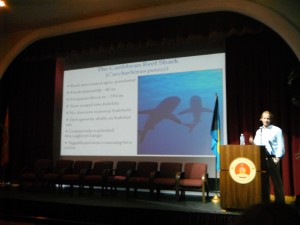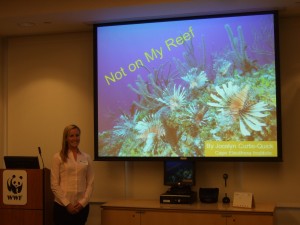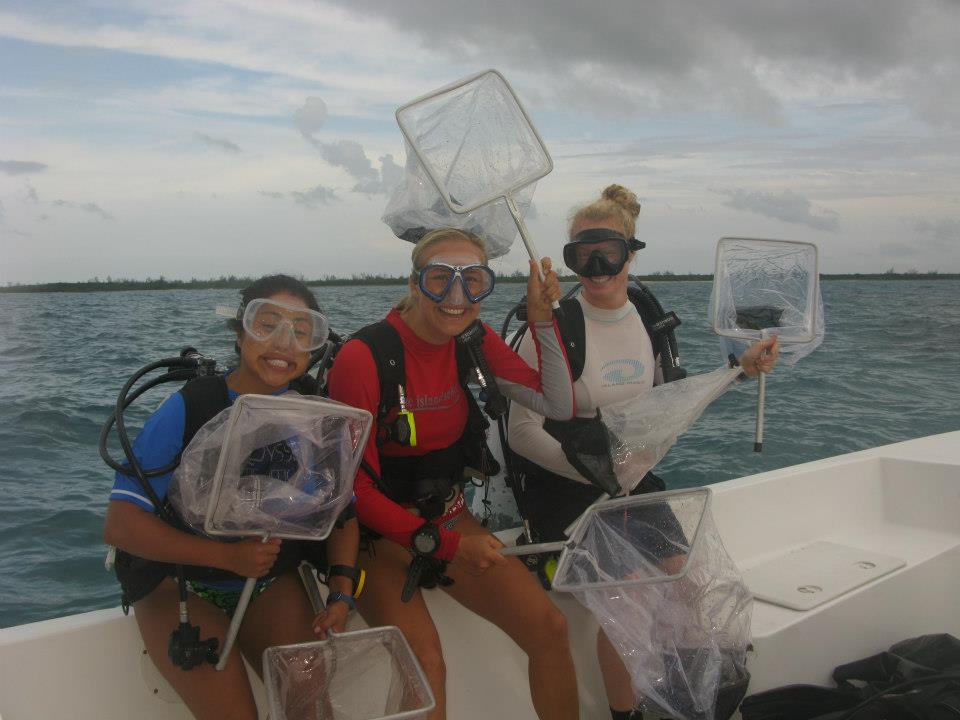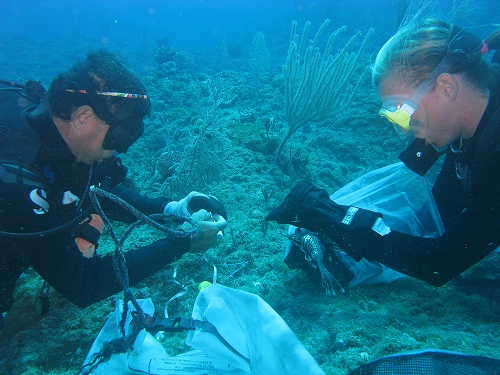On Tuesday, March 5th, 4 scientists from the Cape Eleuthera Institute made the trip to Nassau for the first Bahamas National Natural History Conference, co-hosted by the Bahamas National Trust and the College of Bahamas.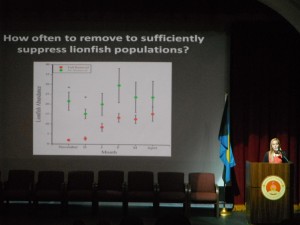 On this first day of the conference, the audience got to hear from Dr. Jocelyn Curtis-Quick, manager of the Lionfish Research and Education Program, discussing the positive impact of removing lionfish from Bahamian reefs. Presenting data collected by Dr. Stephanie Green from Simon Fraser University, Dr. Curtis-Quick showed the audience a model for determining the effects of lionfish on native fish production, and posed the idea that although total eradication of lionfish is unlikey, partial removals (from targeted removals and derbies) can be an effective management strategy.
On this first day of the conference, the audience got to hear from Dr. Jocelyn Curtis-Quick, manager of the Lionfish Research and Education Program, discussing the positive impact of removing lionfish from Bahamian reefs. Presenting data collected by Dr. Stephanie Green from Simon Fraser University, Dr. Curtis-Quick showed the audience a model for determining the effects of lionfish on native fish production, and posed the idea that although total eradication of lionfish is unlikey, partial removals (from targeted removals and derbies) can be an effective management strategy.
Later in the day, Dr. Edd Brooks, manager of the Shark Ecology and Conservation Program, spoke about his six years of research on the Caribbean Reef shark in the Bahamas, an ecologically important apex predator. Dr. Brooks showed interesting sex differences in depth that the sharks inhabit, based on data he obtained from satellite tags that tracked the shark’s movements over a period of 8 months.Both talks were well attended, and were a great way to start off the conference. Aaron Shultz, Director of CEI, and Claire Thomas, who studies queen conch ecology, will present later in the week. Thanks for representing CEI!
